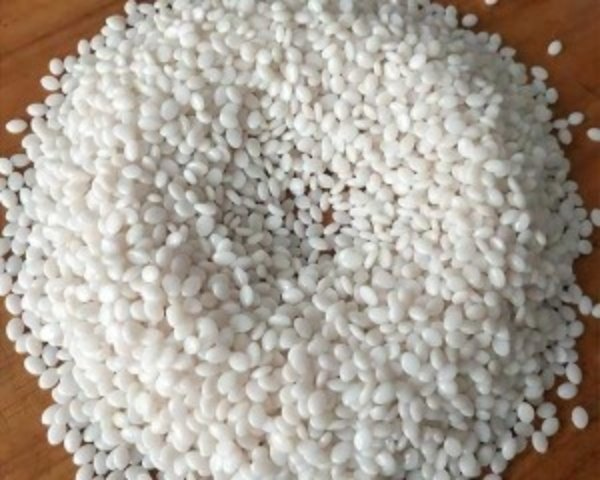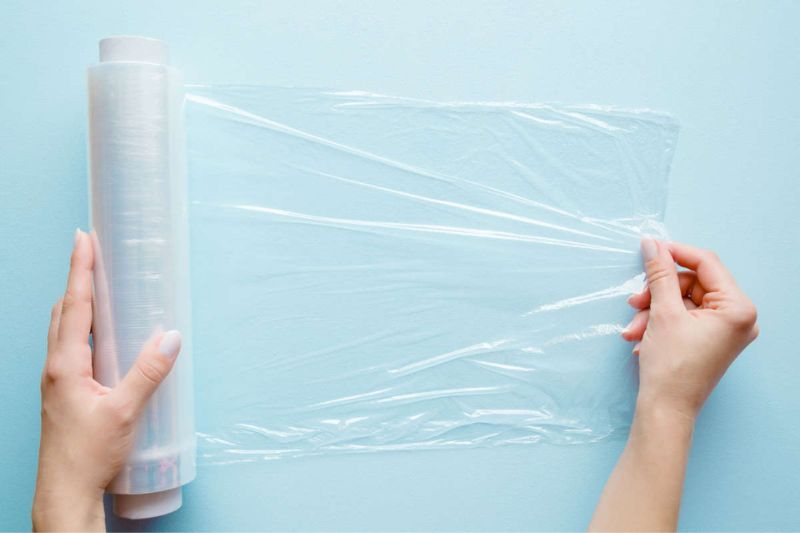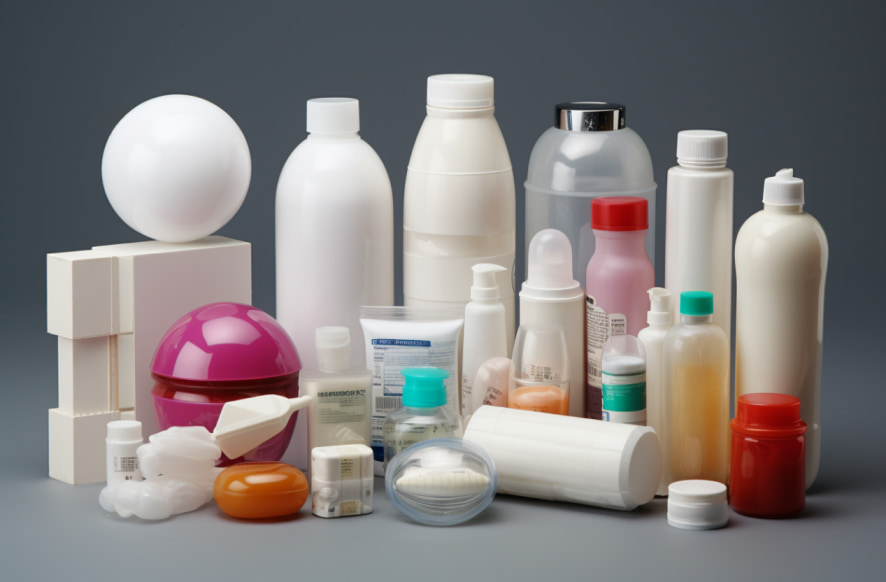As plastic pollution becomes a serious global problem, the need for environmentally friendly solutions is becoming more urgent. PBAT resin has emerged as an effective and sustainable solution, opening a new trend in the plastics industry. In this article, we will explore a list of PBAT resin innovations, their key applications, challenges, and the future of this eco-friendly material.
Read more: What is PBAT plastic? Pros and cons of PBAT
1. Recent Innovations in PBAT Resin
The growing demand for sustainable materials has driven significant advancements in PBAT resin. Researchers and manufacturers continually improve their properties to meet various environmental and industrial needs. Here are some recent innovations in PBAT resin.

PBAT Resin
1.1. Enhanced Biodegradability
Recent innovations in PBAT resin have significantly enhanced its biodegradability, making it an eco-friendly alternative to traditional plastics. PBAT, a biodegradable plastic, decomposes completely under natural conditions into CO2, water, and biomass without leaving toxic residues. This property helps minimize long-term plastic waste and pollution.
Additionally, advancements in PBAT production have further reduced greenhouse gas emissions, contributing to climate change mitigation. By optimizing its chemical structure and blending it with natural polymers like starch or PLA, manufacturers have improved its decomposition speed without compromising strength or flexibility. These innovations align with global sustainability efforts, supporting industries in reducing carbon footprints and addressing growing environmental challenges.
1.2. Improved Mechanical Properties
Traditional PBAT is flexible, but it often doesn't provide the necessary strength for certain applications. By blending PBAT with materials like PLA (Polylactic Acid) or PHA (Polyhydroxyalkanoates), researchers have significantly enhanced its tensile strength and durability. These improved blends are now suitable for demanding applications, such as agricultural mulch films and industrial packaging.
1.3. Crystallization Behaviors
PBAT is a semi-crystalline polymer with moderate crystallinity and good thermal stability, making it easier to process in industrial applications. Its crystal structure is unique, formed by mixed-crystallization of BT and BA units. This structure incorporates BA units into the BT lattice, allowing the material to exhibit reversible crystal transitions under stress.
The crystallization and melting behaviors of PBAT have been studied using tools like Differential Scanning Calorimetry (DSC) and Thermogravimetric Analysis (TGA). PBAT melts at a broad peak around 123 °C and crystallizes at about 60 °C. It also shows excellent thermal stability, with a 5% weight loss temperature above 350 °C. These properties make PBAT highly stable for various processing methods, including extrusion, injection molding, and film blowing.
1.4. PLA-PBAT Based Blends
PLA-PBAT blends combine the strengths of both materials, offering improved toughness while maintaining biodegradability. PLA, a renewable and biodegradable polymer, is brittle and lacks toughness, limiting its applications. PBAT, a flexible and biodegradable polymer, is often blended with PLA to enhance its properties, especially for extrusion films and foam applications.
However, due to the immiscibility of PLA and PBAT, these blends exhibit poor mechanical properties without modification. Researchers have explored various compatibilizers and plasticizers to improve their compatibility and performance. For instance, additives like Joncryl and phthalic anhydride enhance the strain at break, tensile strength, and overall blend toughness.
PBAT also increases the melt elasticity and broadens the processing temperature range, improving PLA's processability in extrusion and blow molding. These innovations have expanded the use of PLA-PBAT blends in biodegradable mulch films, packaging, and other applications, balancing sustainability and performance.

PBAT based products
1.5. Cost-Effective Production Methods
Producing PBAT-based materials at a lower cost while maintaining quality is essential for consumer acceptance. To achieve this, manufacturers often blend PBAT with affordable materials like starch and reinforcing agents such as PLA. These combinations help to lower production costs while enhancing mechanical properties, ensuring that the final products remain biodegradable.
Over the past decade, PBAT-based composites have been developed into commercial products that meet international compostability standards and have received compost certificates. Additionally, these blends can be processed using standard plastic manufacturing equipment, which makes production efficient and cost-effective. As a result, PBAT-based products, such as packaging, mulch films, and cutlery, are now widely used due to their high performance, good quality, and competitive pricing.
2. Key Applications Leveraging PBAT Resin Innovations
2.1. Packaging
PBAT-based materials are revolutionizing the packaging industry as a sustainable alternative to conventional plastics. Traditional plastic packaging generates massive waste, with most ending up in landfills. To address this, biodegradable PBAT-based packaging has gained popularity due to its compostability and unique properties.
Many companies have developed PBAT blends with starch and PLA, which are ideal for various packaging applications. These materials are used to produce shopping bags, compost bags, and other packaging products. PBAT-based packaging is now setting a new standard for eco-friendly and functional solutions in the global market.

PBAT food packaging
2.2. Mulch film
PBAT-based mulch films are transforming modern agriculture by providing an eco-friendly alternative to conventional plastic films. Traditional polyethylene (PE) mulch films are difficult to recover after use, leaving harmful residues in the soil that block water infiltration, hinder root growth, and reduce soil productivity.
PBAT-based biodegradable mulch films are designed to degrade completely in the soil after their useful life, leaving no harmful residues. PBAT/PLA/nano-particle composite films are durable during use, resisting water, heat, and UV radiation while supporting soil health and crop growth.
2.3. Single-use products
PBAT is widely used to create eco-friendly disposable products like cups, plates, knives, and forks. These items are convenient for daily use and biodegrade easily, reducing environmental harm. Biodegradable garbage bags made from PBAT also help cut down on long-term plastic waste in landfills.
Additionally, PBAT is used in household care products, such as shampoo bottles, soap dispensers, and toothbrushes. Its versatility makes it an ideal material for producing items that balance convenience with sustainability, supporting environmentally conscious living while maintaining functionality in everyday products.

PBAT products
3. Challenges and Future Directions
3.1. Challenges
While PBAT resin offers many benefits, it also faces several challenges that need to be addressed for broader adoption. Here are the primary obstacles and potential solutions:
- Moisture Sensitivity: PBAT is known to absorb moisture, which can negatively impact its mechanical properties. Researchers are developing coatings and additives to enhance PBAT's resistance to moisture, ensuring consistent performance across various applications.
- Limited Heat Resistance: The relatively low melting point of PBAT limits its use in high-temperature environments. Innovations are aimed at creating heat-resistant blends by combining PBAT with materials such as PLA (Polylactic Acid) or PCL (Polycaprolactone).
- Recycling Challenges: Although PBAT is biodegradable, its recycling process is not straightforward. Efforts are being made to develop recycling technologies that facilitate the recovery and reuse of PBAT in new products.
3.2. Future Directions
PBAT biodegradable plastic is becoming a new trend in the plastics industry with great potential for development. Increasing environmental awareness and stricter plastic waste management policies have boosted the demand for biodegradable plastics. Currently, PBAT plastic has many wide applications such as:
- Industry: PBAT can be widely applied in industries such as packaging, agriculture, medicine, and fashion…
- Consumer products: Consumer products such as bags, food packaging, and disposables will increasingly use PBAT.
Additionally, PBAT is being applied in technological advancements, with companies and research organizations heavily investing in improving production technologies to lower costs and enhance usability. Efforts are also being made to improve the quality and performance of PBAT to compete with traditional plastics.
4. Conclusion
In short, PBAT resin is a sustainable and effective solution to reduce plastic waste and protect the environment. With outstanding benefits and great development potential, PBAT is becoming a new trend in the plastics industry. The use of PBAT plastic not only helps protect the environment but also meets the needs of consumers and industries in the future.
5. About EuroPlas’ Bioplastics
EuroPlas, through its BiONext brand, delivers innovative bioplastic solutions made from renewable materials like PHA, PLA, and PBAT. These bioplastics are sourced from natural elements such as corn and palm oil and fully biodegrade within 12 months into water, CO₂, and biomass, supporting a sustainable, circular lifecycle.

EuroPlas’ Bioplastics
BiONext bioplastics offer exceptional mechanical properties, including high hardness, impact resistance, and flexibility, catering to industries like food packaging, agricultural films, and disposable cutlery. By reducing dependence on fossil fuels and promoting renewable resources, EuroPlas drives sustainable practices and sets a benchmark for eco-friendly solutions in the plastics industry. If you want to read more articles about plastics, visit our blog page.
For more information and samples, please contact us HERE!